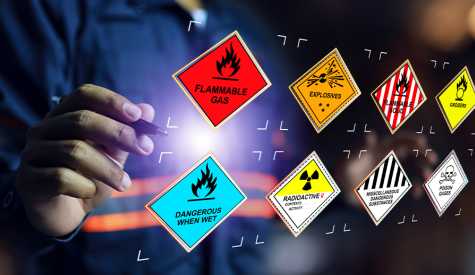10 Ways To Use Safety Data Sheets

As a safety professional, Safety Data Sheets (SDSs) have always been a close, professional friend. They are scientific, clear, help you make decisions, and provide vital contextual clarity in emergency situations. I’ve also found them useful for explaining my work to non-safety professionals.
Two stories come to mind for me...
An agriculture employee was tasked with baiting rodent traps outside a building. The employee, a smoker, decided to have a cigarette immediately after handling poisonous bait. The employee did not wear the prescribed personal protective equipment (PPE) on his hands nor did he wash his hands after handling the bait. The act of smoking, combined with harmful bait residue, made the employee sick; poisonous chemicals from the bait entered his body through the cigarette. As a safety professional, I needed to provide the SDS for the rodent bait to the urgent care physician, so they would know how to treat his specific exposure.
An agriculture worker was vaccinating an animal when he inadvertently stuck himself with the vaccination needle. The SDS clearly stated that exposure required a certain post-exposure medication and consultation with a hand surgeon, if the needle stuck in a digit. That’s information attending medical professionals and employees must have.
Section 4 of any Safety Data Sheet outlines treatment protocol for exposures. Section 7 of provides guidance on safe handling practices. Section 8 covers PPE measures.
Here are 10 ways to use your Safety Data Sheets...
- To help you with the personal protective equipment (PPE) assessment certification [1910.132(d)(2)], each employer must have it in writing if employees use PPE for their work. If employees work with a hazardous substance, consult the SDS for that substance to first learn if PPE is needed, if so, under which conditions, for which types of exposures, and the specific type of PPE.
Example: Safety Data Sheets may specifically state, “Use respiratory equipment with gas filter, type A2.”
- SDSs help determine the type(s) of fire extinguishers you need in particular work areas based on the hazardous substances used or stored in those areas. Section 5 of any Safety Data Sheet provides guidance on fighting a fire involving the chemical. As you know, there are five different types of fire extinguishers, along with multi-class types.
Example: “Extinguish with alcohol-resistant foam, carbon dioxide, dry powder or water fog. Do not use water jet as an extinguisher, as this will spread the fire.”
- If you are going to transfer a hazardous substance from one container to another, consult the SDS. Sections 7, 13, and 14, of any Safety Data Sheet, explain safe handling, proper disposal, and shipping and transportation classification.
Example: “Ground container and transfer equipment to eliminate static electric sparks.”
- If an employee comes to you with an ailment, and you are unable to determine whether it’s work-related or not, and their supervisor is noting signs and symptoms of some physical ailment, consult your SDS before dismissing something as eczema, for example. Section 11 of an SDS identifies toxicology and health effects; Section 8 covers exposure limits.
“Prolonged dermal exposure or frequent contact may cause redness, itching, eczema and skin cracking. Defats the skin.”
- Whether conducting a safety audit or preparing to be audited, ensure that SDSs are accessible to employees. This means there are no barriers to their access. Paper copies cannot be locked in a cabinet or office and electronic access cannot require a password. Safety audits involving chemicals and chemical storage areas, should involve SDS compliance: No missing sheets, no old sheets, etc.
Section 1910.1200(g)(8) of OSHA’s Hazard Communication Standard states, “The employer shall maintain in the workplace copies of the required safety data sheets for each hazardous chemical, and shall ensure that they are readily accessible during each work shift to employees when they are in their work area(s). (Electronic access and other alternatives to maintaining paper copies of the safety data sheets are permitted as long as no barriers to immediate employee access in each workplace are created by such options.)”
Learn about other SDS requirements here.
- If you are designing a ventilation system as an engineering method to reduce exposure to hazardous substances (local exhaust ventilation, or selecting a bio safety cabinet, for example) consult the SDS for the substance(s) you are working to remove. The SDS may have information to help you select the correct ventilation system. For example, you might learn that the motor on the fan needs to be non-sparking, or that the filtering media cannot exhaust back into a room.
Learn more about bio safety cabinets: Watch
- When conducting an accident or near-miss investigation where a hazardous substance was a factor, be sure to determine whether or not the exposed person(s) had unencumbered access to SDSs. Make sure to note that the SDSs are up to date (the latest revision; see section 16 of the safety data sheet). Also, be sure to list in your report the specific substances involved in the incident. In this scenario, you’ll want to get a history of safety training activity for hazard communication, and locate the written safety program. And, about a hundred other things.
- The hazard communication regulation 1910.1200(a)(2) requires, “ . . . preparation and distribution of safety data sheets to employees and downstream employers . . .” This means that you must have a full inventory of SDSs for every hazardous substance to which employees and contracted employees have exposure and you must make them accessible.
- SDSs help you determine whether or not you need to do air monitoring, along with communicating exposure limits for certain hazardous substances: oShort-Term Exposure Limits (STEL), Permissible Exposure Limits (PEL), and Time-Weighted Average (TWA). Whether you are personally performing monitoring or contracting with an Industrial Hygienist, this information is critical. You’ll din that information in Section 8 of a Safety Data Sheet.
- When conducting an audit or preparing to be audited, expect questions. Were employees trained on how to access and read a Safety Data Sheet? Have employees received hazard communication training? Did that training include information about SDSs? Were the SDSs provided in a language understood by the employee?
There are many more scenarios where you will find Safety Data Sheets valuable, and dozens of ways these resources will effectively support your work. After all, these are Safety Data Sheets—they are an incredibly useful tool for us, with a wealth of knowledge.
Learn more about chemical management.


